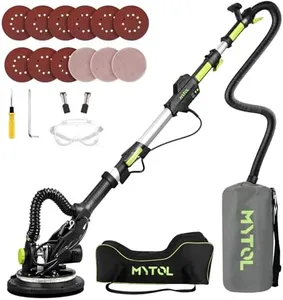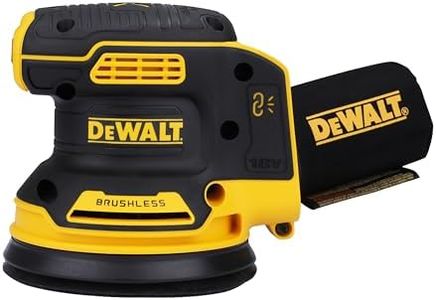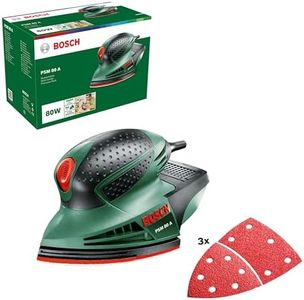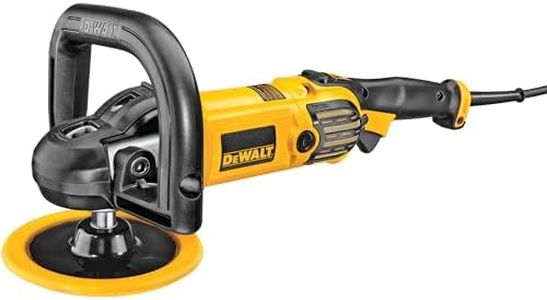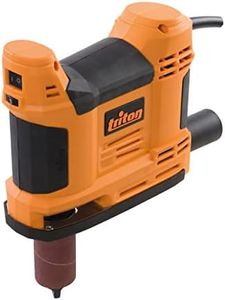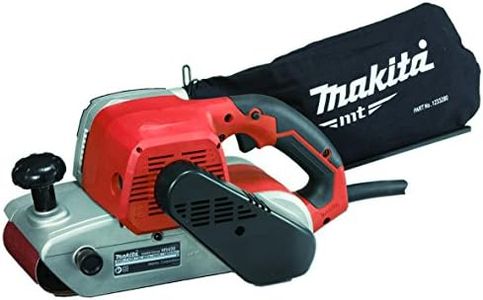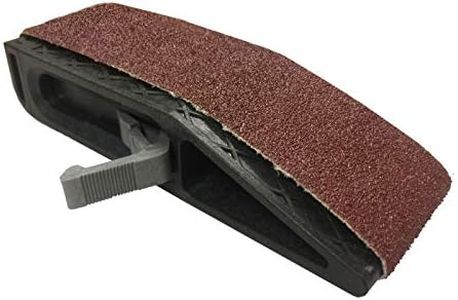We Use CookiesWe use cookies to enhance the security, performance,
functionality and for analytical and promotional activities. By continuing to browse this site you
are agreeing to our privacy policy
10 Best Floor Sander
From leading brands and best sellers available on the web.Buying Guide for the Best Floor Sander
Choosing the right floor sander is essential to get a smooth, even finish on your floors, whether you're refinishing hardwood or preparing a new surface. The process involves understanding the types of sanders available, the space you’re working with, and your comfort level with handling these powerful machines. Thinking through what you'll be sanding—such as old wood, new wood, or patterned flooring—will help you identify the best features for your project. Knowing the main specs and what they mean will help you make an informed choice that delivers the results you want and that fits your experience level.Type of Floor SanderThe type of sander is one of the first things to consider. There are drum sanders, orbital (or rotary/oscillating) sanders, and edge sanders. Drum sanders are powerful and best for removing a lot of material quickly, making them suitable for large jobs or floors with heavy damage, but they require some skill to avoid gouging. Orbital sanders are gentler and easier to control, making them great for beginners or for less aggressive sanding, like smoothing or finishing. Edge sanders help get close to walls and corners where larger sanders can’t reach. Think about the size of your space and the condition of your floor to determine the type—or combination—of sanders you'll need.
Sanding WidthSanding width refers to how wide a strip the machine can sand in a single pass. Machines with a wider sanding width are more efficient for large spaces since you can cover more area at once but may be harder to maneuver in tight or crowded rooms. Conversely, machines with narrower sanding widths are more precise and easier to handle, especially in small spaces or around obstacles. Choose the width based on your room size and how comfortably you can operate the machine.
Motor PowerMotor power, usually measured in amps or horsepower, determines how effectively the sander can remove material and handle tough jobs. High-powered motors can deal with harder woods and stubborn old finishes, but they tend to be heavier and a bit more challenging for beginners to control. Lower-powered sanders are lighter and easier for small or medium projects on softer materials, but may struggle with tough or uneven floors. Match the power to your experience level and the condition of your floors.
Dust CollectionDust collection is about how well the machine contains the sawdust and debris it generates. Good dust collection means less mess, better visibility, and a healthier workspace. Some sanders have built-in bags, while others can be connected to a shop vacuum. More effective systems are especially important if you’re working in a lived-in home or are sensitive to dust. If cleanliness and air quality matter—or if you'll be working indoors for a long time—prioritize a sander with an efficient dust collection system.
Weight and ManeuverabilityWeight affects how easy it is to use and transport the sander. Heavy machines can feel more stable and do more work through downward pressure, but they can also be tiring to maneuver, especially for extended periods or in tricky spaces. Lighter sanders are easier to push, lift, and move but might require more passes to get the same result. Your choice should depend on both your own strength and stamina, as well as the layout and accessibility of the area you’re sanding.
Adjustable SettingsAdjustable settings, such as speed or sanding depth, let you tailor the machine’s behavior to your needs. Variable speed sanders offer more control, so you can sand gently for fine finishes or power through old finishes when necessary. Machines with adjustable sanding pressure or depth allow more customization for different tasks. If you anticipate working on a variety of jobs or with different wood types, look for machines with these flexible controls.

